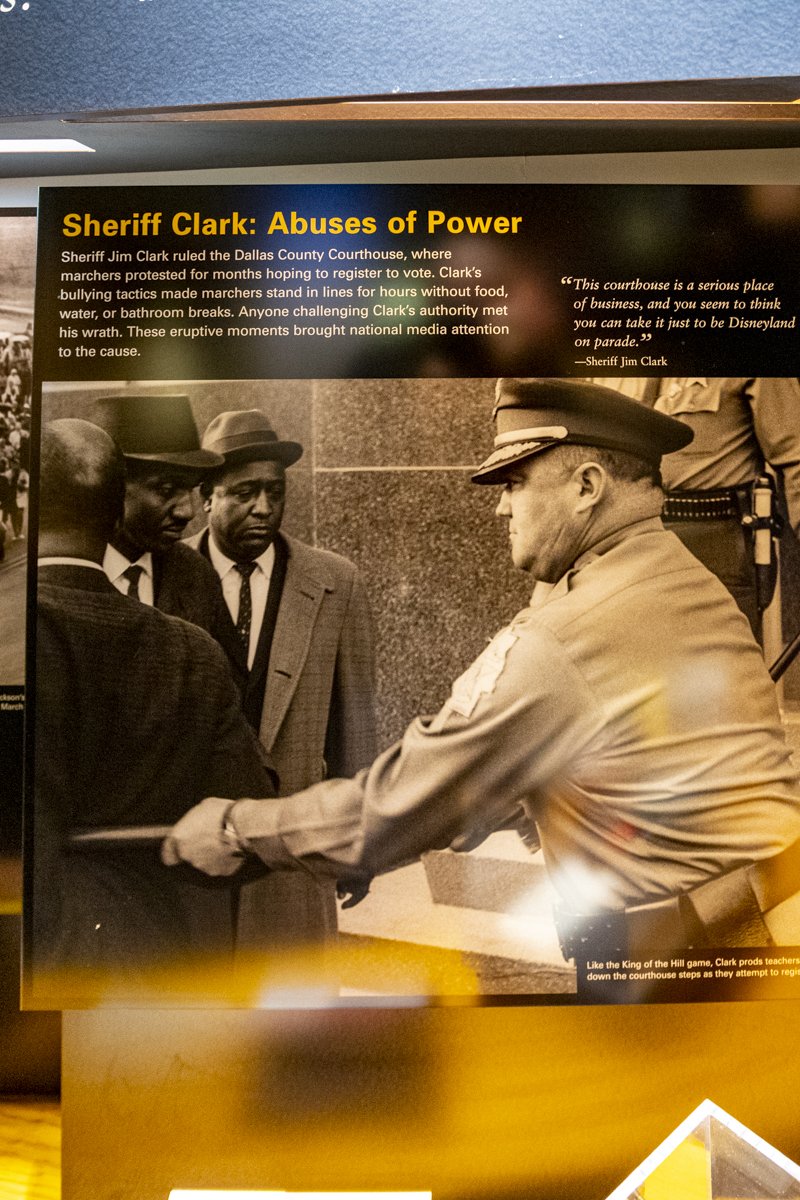
January 8, 2022
SELMA TO MONTGOMERY NATIONAL HISTORIC TRAIL
Alabama
“The Selma to Montgomery National Historic Trail is a 54-mile National Historic Trail in Alabama. It commemorates and marks the journey of the participants of the 1965 Selma to Montgomery marches in support of the Voting Rights Act.” Wikipedia
While researching things to see in Montgomery I saw a reference to Selma. I knew Selma was home to the Edmund Pettus Bridge. When I found that Selma was only a 50-minute drive away I did a little more research and found information about the National Historic Trail and three interpretive centers along the trail operated by the National Park Service.
At the Selma Interpretive Center only the bookstore was open, the exhibit area is closed. I got my National Park Passport booked stamped and set off to find the start of the trail, the Brown Chapel AME Church, only a few blocks away. The front of the church appeared to be going through some renovations as construction equipment cluttered the view, so I didn’t stop to take any pictures and set off to follow the trail back to Montgomery. The next landmark was the Edmund Pettus Bridge, which I had driven over coming into Selma. Just the sight of the bridge stirred emotions as visions of ‘Bloody Sunday’ entered my brain. I stopped at the Memorial Park just after crossing the bridge on the way out of Selma. Memorials to organizers glistened in the sunlight. I then went to the crest of the bridge to take pictures, walking the narrow sidewalk marchers had used in 1965. As I walked back to my truck I tried to imagine what John Lewis and others were thinking on March 7, 1965, as they walked the sidewalk approaching the police at the bottom of the bridge.
There really isn’t much to see along the drive, there are four historic markers commemorating the places where the participants camped each night of the five-day march. In White Hall, a little less than half-way between Selma and Montgomery, the Lowndes Interpretive Center tells the story of the successful Selma to Montgomery Voting Rights March of March 21-25, 1965. This site was also home to a tent city after the signing of the Voting Rights Act in August 1965. White landowners retaliated against tenant farmers who registered, voted, or engaged in any voting rights activities by throwing them off their land. The tent city remained for nearly two years.
The march ended on the west side of the Alabama State Capitol where the crowd was numbered around 25,000. The march is credited with being a major influence in the passage of the Voting Rights Act.
Edmund Pettus Bridge
The view walking out of Selma over the Edmund Pettus Bridge
Memorial Park
Display in the Lowndes Interpretive Center
Display in the Lowndes Interpretive Center
Display in the Lowndes Interpretive Center
Display in the Lowndes Interpretive Center
Display in the Lowndes Interpretive Center
Sculpture in the Lowndes Interpretive Center
Display in the Lowndes Interpretive Center
Display in the Lowndes Interpretive Center
The Park outside the Lowndes Interpretive Center where a tent city used to be.
Historical marker outside the Alabama Capitol

















